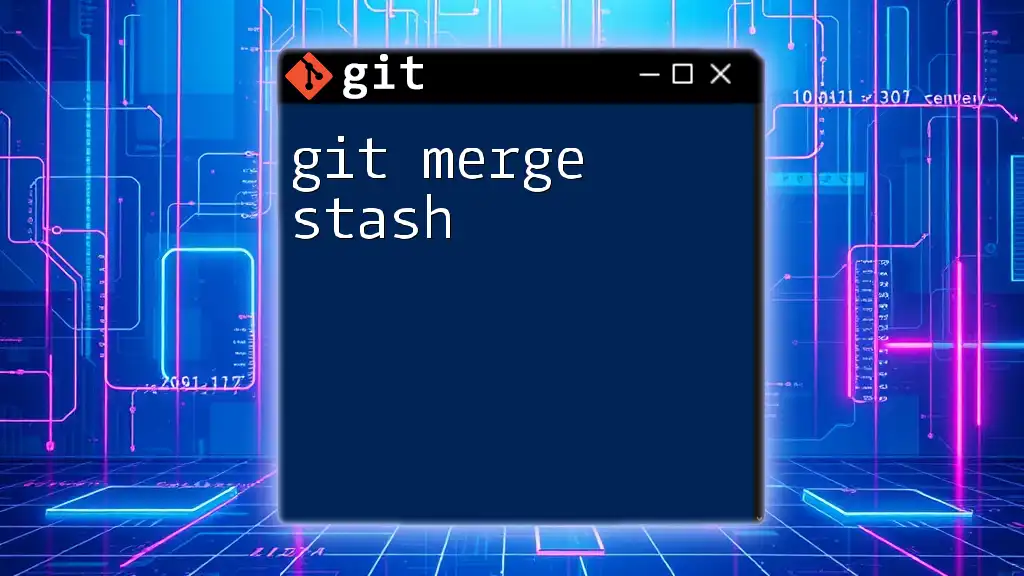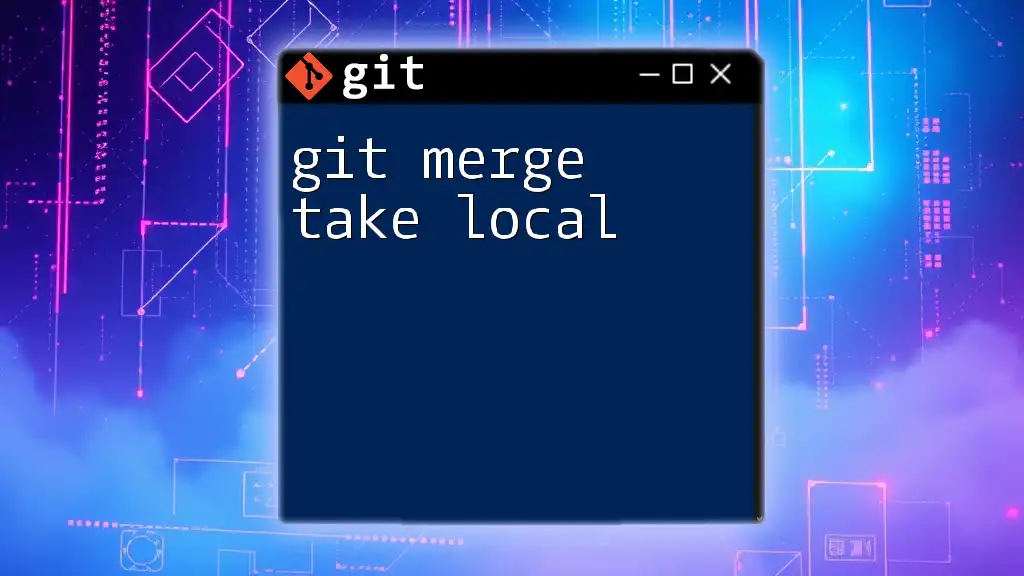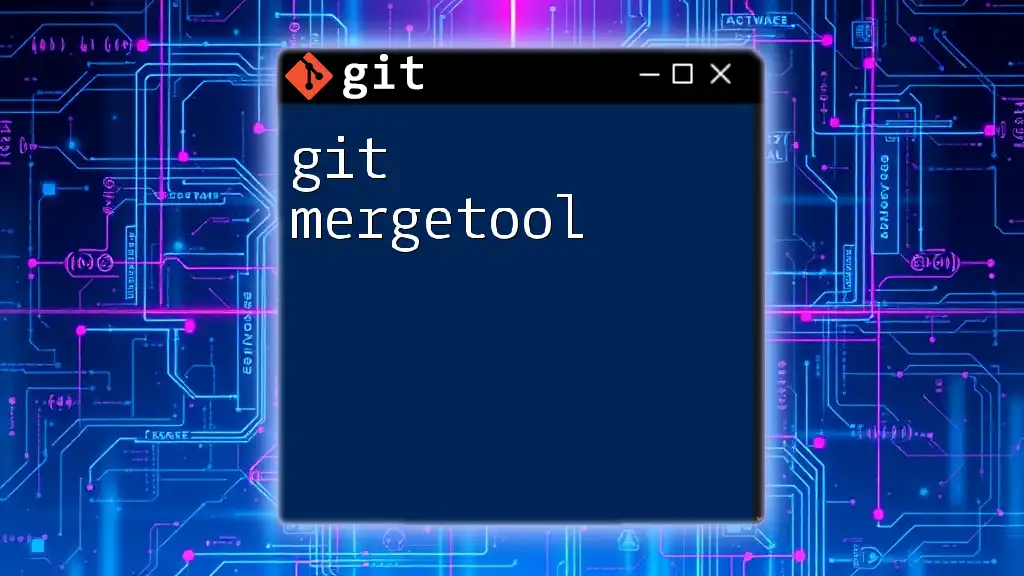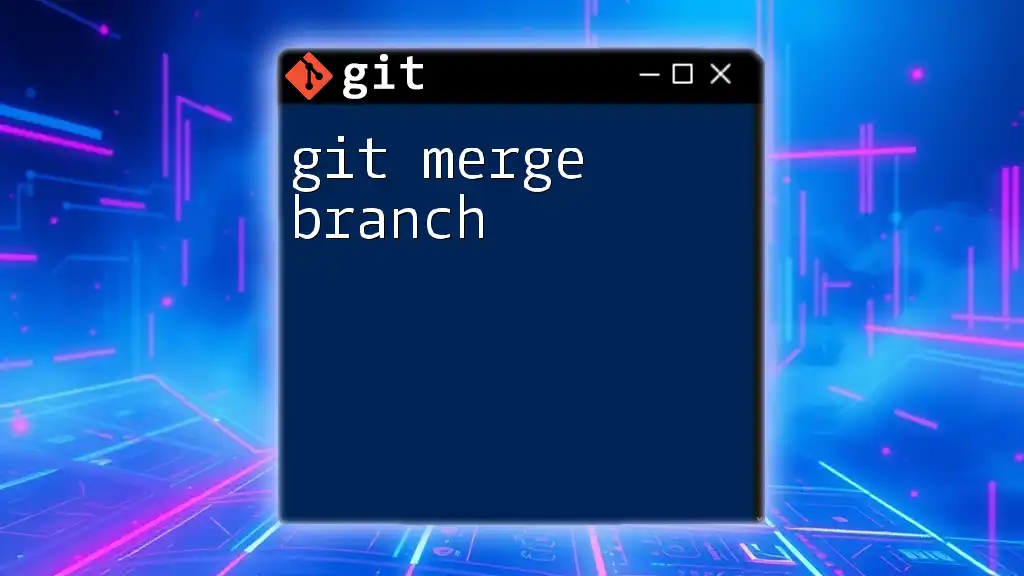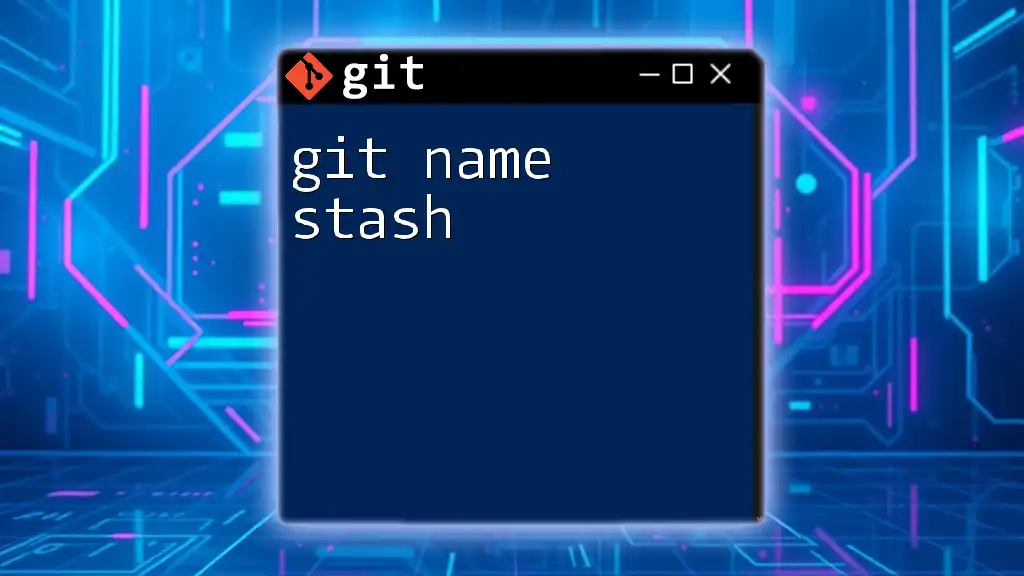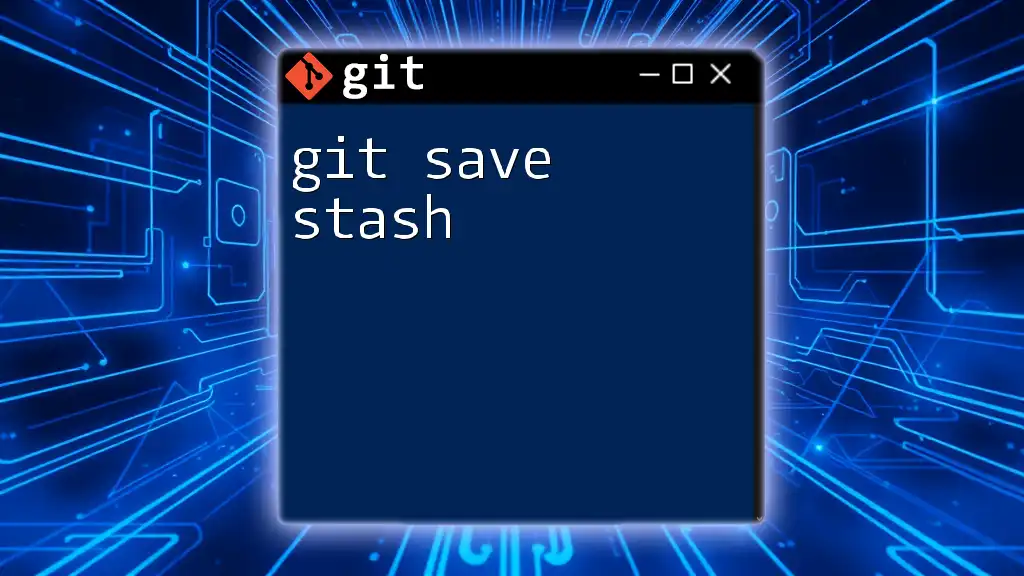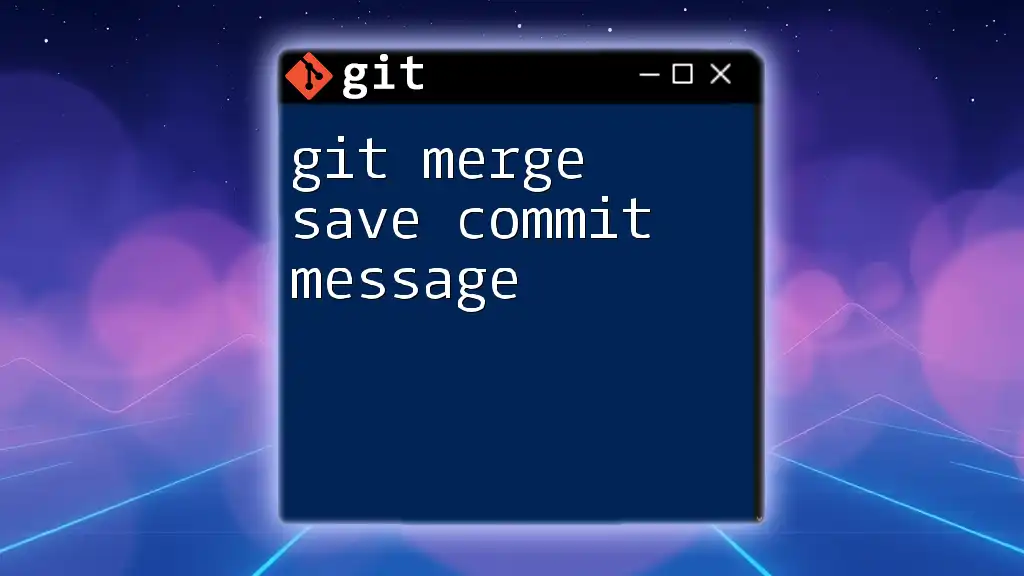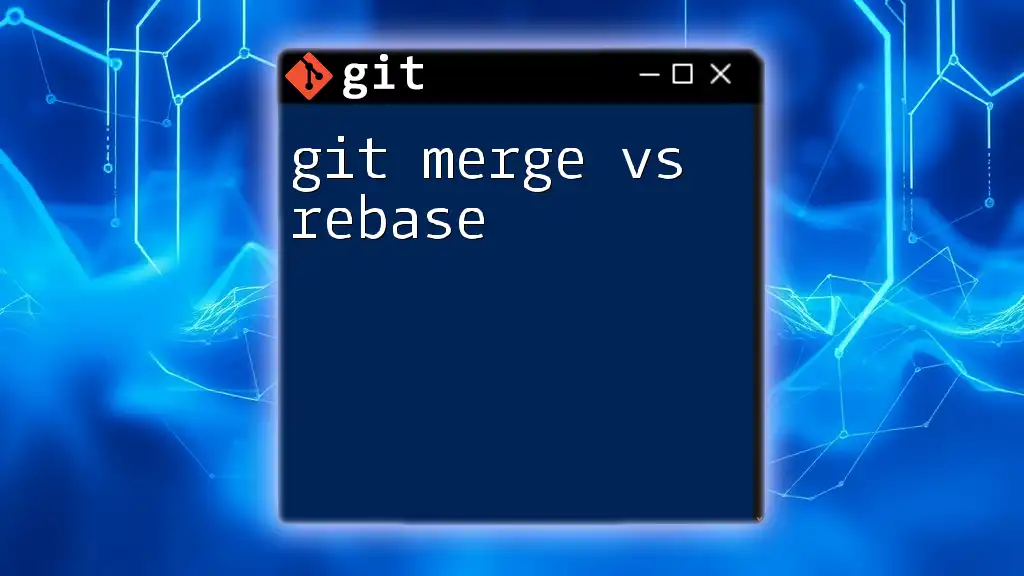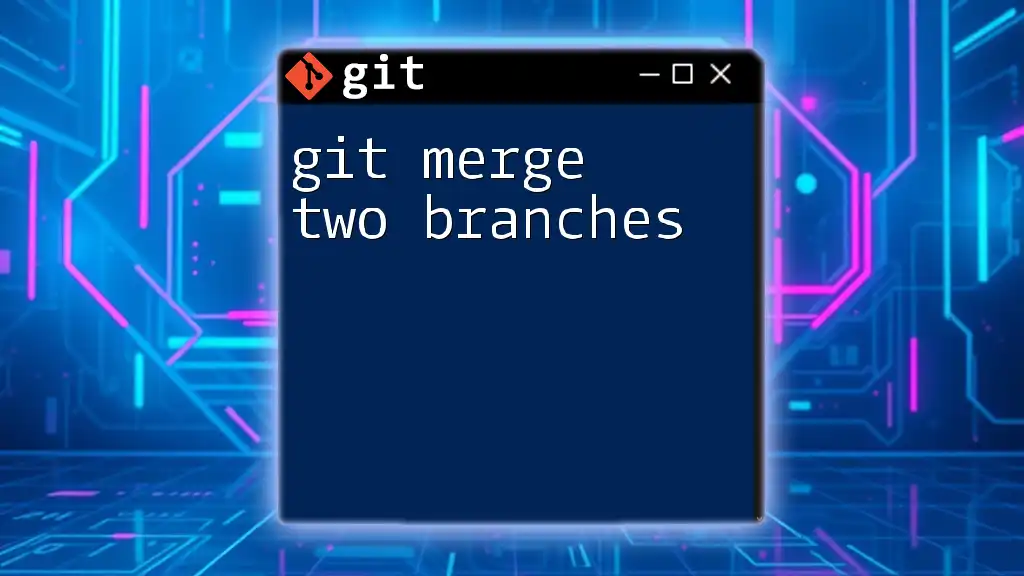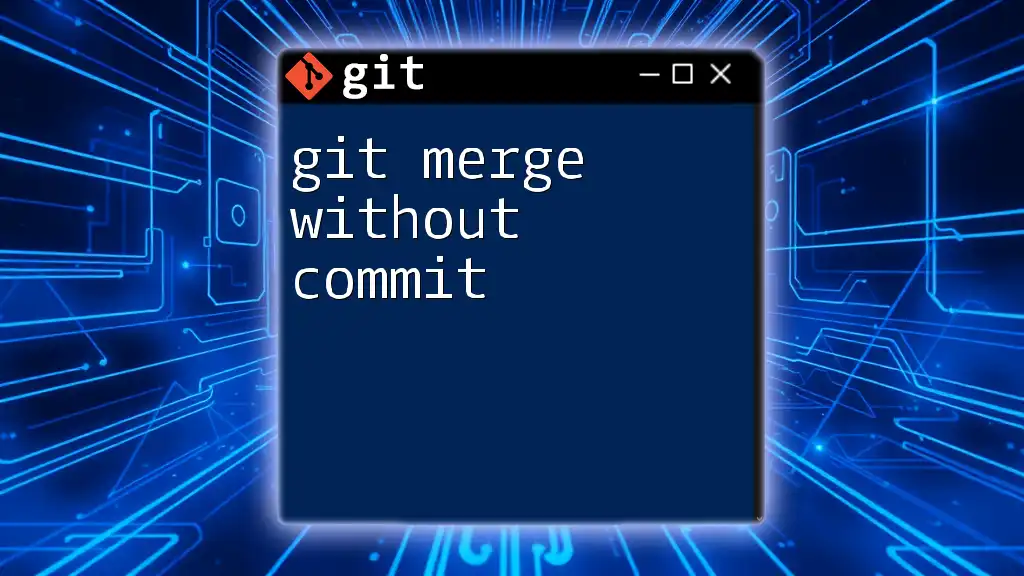To apply your stashed changes and merge them with your current branch, you can use the `git stash pop` command, which retrieves and removes the latest stash from your stash list.
git stash pop
Understanding Git Stash
What is Git Stash?
Git stash is a powerful tool within Git that allows you to temporarily save changes in your working directory without committing them. This is particularly useful when you need to switch branches or pull in updates but are not yet ready to finalize your current work.
Key Points to Remember:
- Stashing keeps your working directory clean and avoids cluttered commit history.
- It enables you to quickly move between tasks without losing your progress.
How to Use Git Stash
The basic syntax for stashing changes is simple:
git stash
You can even give your stash a descriptive message to identify it later:
git stash save "your stash message"
By naming your stash, you can easily remember what the changes were related to when you come back to it later.
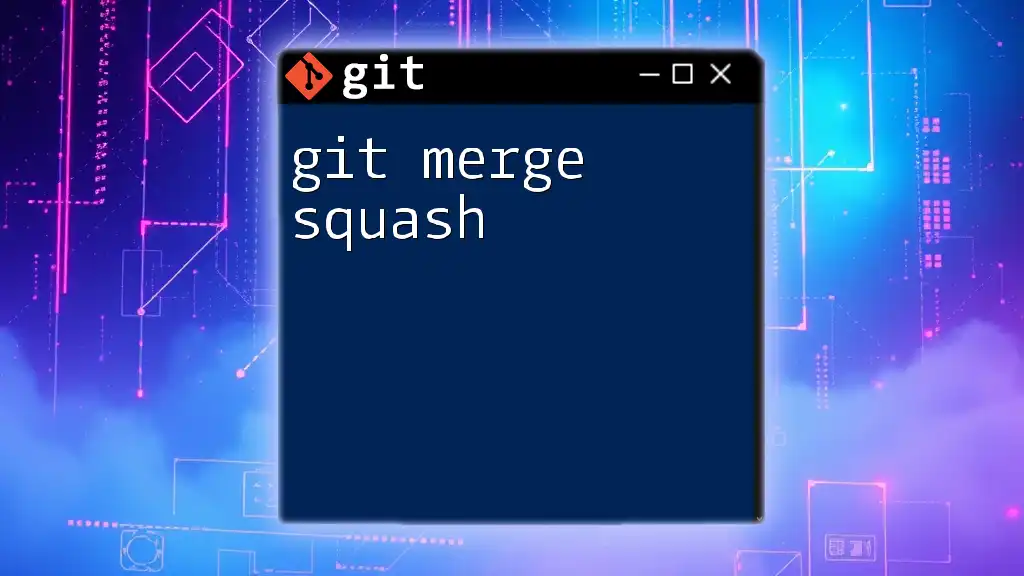
The Merge Process in Git
What is a Git Merge?
Merging is a fundamental aspect of Git that enables you to combine changes from different branches. It allows you to integrate the work of multiple collaborators or consolidate feature branches back into the main development line.
Important Distinction: Merging is different from rebasing. While merging creates a new commit that combines the histories of both branches, rebasing moves the entire branch up to the tip of the base branch, creating a linear history.
Basic Syntax and Usage of Git Merge
To merge another branch into your current branch, you would use:
git merge <branch-name>
Potential Merge Conflicts: It’s crucial to note that sometimes conflicts may arise when changes overlap between branches. Such conflicts will stop the merge process until you resolve them. Use commands like:
git status
to identify which files are in conflict, enabling you to address them accordingly.
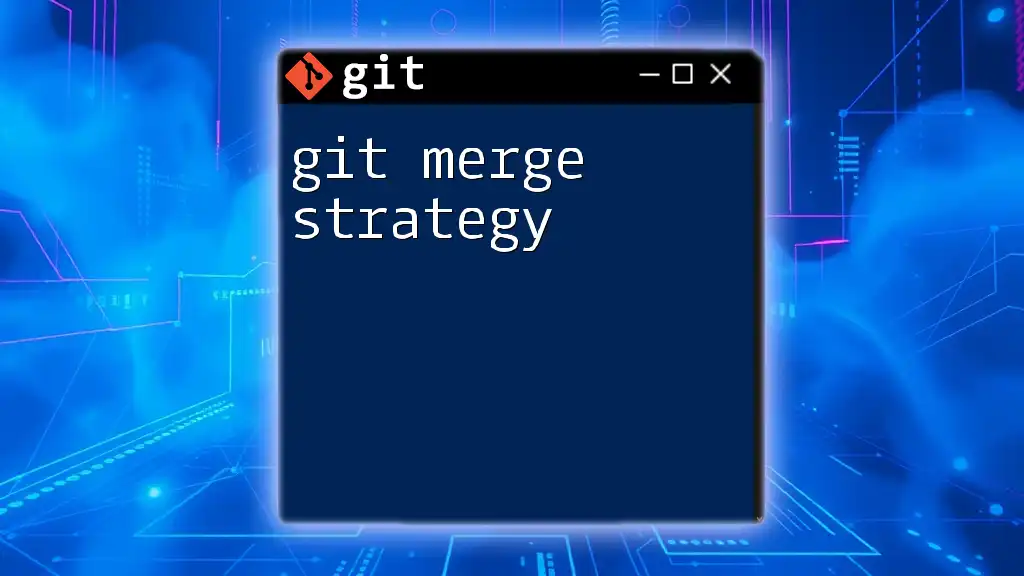
Merging with Stashed Changes
The Need for Merging Stashed Changes
As you work with Git, you may need to merge code from one branch into another while having uncommitted changes stashed. In these instances, understanding how to effectively apply stashed changes becomes paramount.
Steps to Merge Stashed Changes
Applying a Stash
Once you've merged a branch, the next step is to apply your stashed changes back into your working directory. You can do so by executing:
git stash apply stash@{0}
If you've made multiple stashes, specify which one to apply by changing the number in the braces. Additionally, you can apply the stash while keeping the index intact by using the following command:
git stash apply --index
Merging with the Current Branch
To efficiently manage merging with stashed changes, follow these steps:
- Stash your changes to save any uncommitted progress.
git stash - Switch to the target branch (e.g., `main` or `develop`).
git checkout <target-branch> - Merge the changes from another branch.
git merge <feature-branch> - Apply the stash on top of the merged changes:
git stash apply
Resolving Conflicts During Stash Application
Identifying Conflicts
When applying your stash after a merge, you may encounter conflicts. These need to be resolved before proceeding. Use:
git status
to see a list of conflicted files that require your attention.
Steps to Resolve Conflicts
To resolve these conflicts, you need to:
- Open the files marked as conflicted.
vim <file-name> - Look for markers indicating the conflicts, and manually edit the code to resolve them. After editing:
git add <file-name>
- After resolving all conflicts and staging the files, complete the merge by executing:
git merge --continue
Clearing Stash After Merging
Once you have successfully merged and applied your stashed changes, it’s a good practice to clean up by removing the stashed changes. You can drop a specific stash with:
git stash drop stash@{0}
Or clear all stashes with:
git stash clear
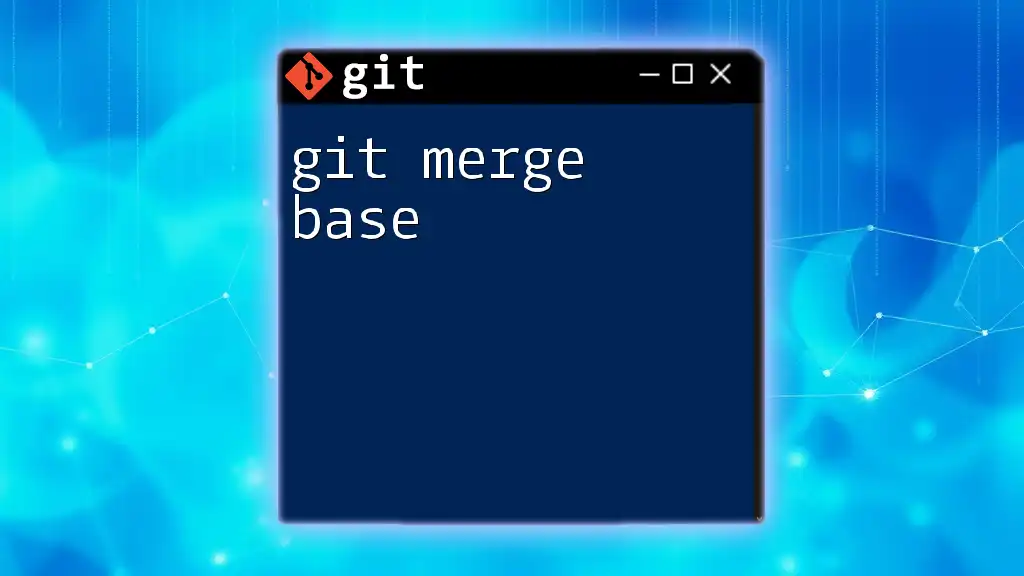
Best Practices for Using Git Merge and Stash
Regularly Stashing Changes
It’s advisable to stash your changes regularly, especially before switching branches or pulling updates. Consistently naming your stashes with descriptive messages can save a lot of time and confusion later.
Keeping Branches Updated
Before merging, always ensure that the branch you are merging into is updated. This minimizes the potential for merge conflicts. To fetch the latest changes, use:
git pull origin <branch-name>
Utilizing Git Stash Wisely
Consider exploring other stashing techniques, such as `git stash branch`, which can create a new branch from your stash. This can be an excellent approach when the stash contains significant changes that need further development before they are integrated.
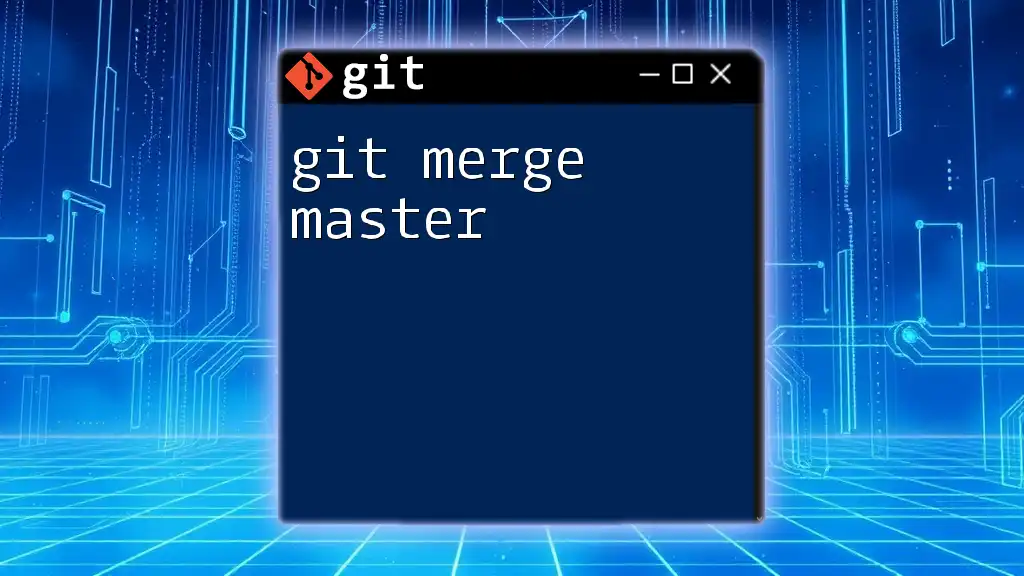
Conclusion
The git merge stash workflow is an integral part of efficient version control in your development process. By mastering the usage of `git stash` before merging, you can maintain a clean working environment and streamline your collaborative efforts. Regular practice with these commands will build your confidence in managing your codebase effectively.
For further learning, we encourage exploring additional Git resources to refine your skills in version control management.

